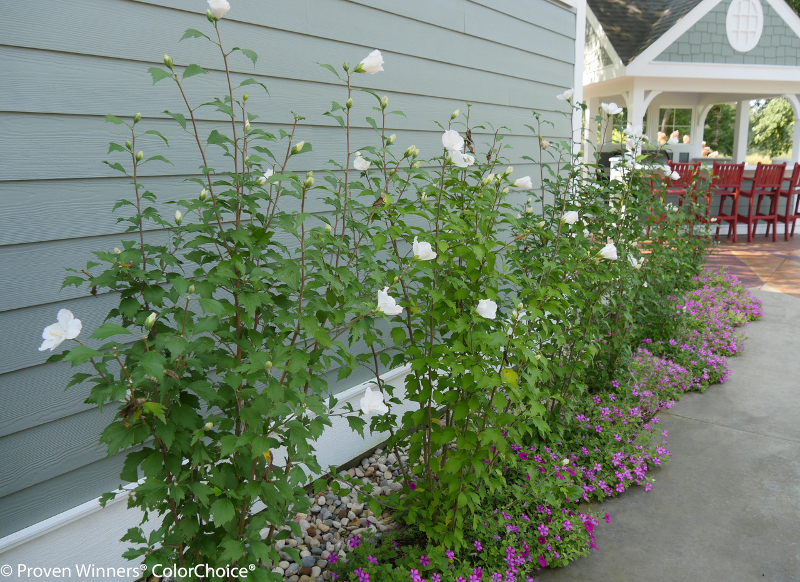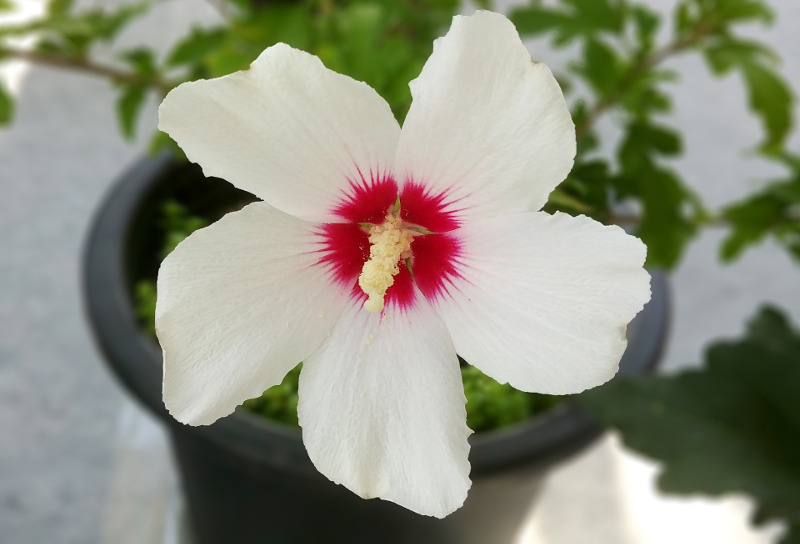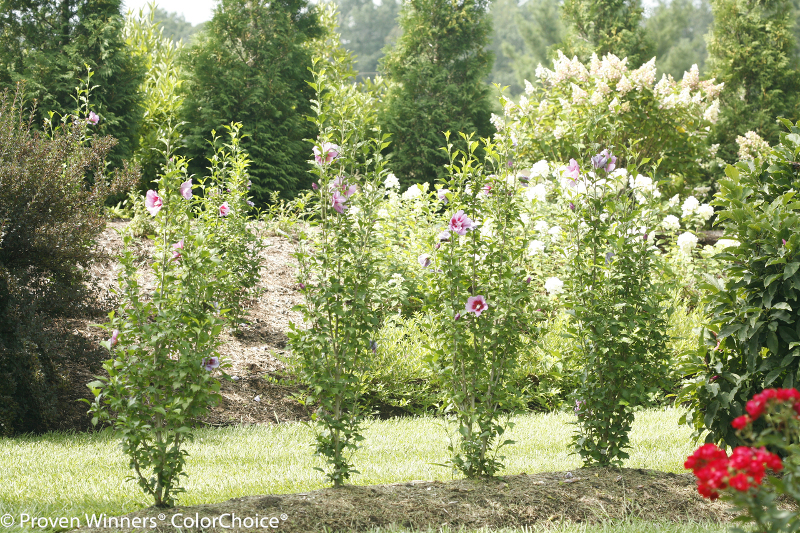While the term “rose of Sharon" has been used for many plants, including in biblical references, the plant most often associated with it today is the popular easygoing shrub Hibiscus syriacus, from southern China.
The summer flowers are bold and exotic-looking with flared petals ringing a large pistil, often surrounded by a contrasting-colored eye. The national flower of South Korea, its other common names are rose mallow or shrub althea. Rose of Sharon is in the Malvaceae family of plants, along with mallows and hollyhocks.
If you are the new owner of a rose of Sharon, you may be wondering about the best practices for planting it. Here’s what you’ll want to know.

What You Need to Plant Rose of Sharon
- A shovel or sharp spade
- Compost or aged manure
- Optional: bark chips as a composting mulch to retain moisture
- The perfect location or container picked out
- Water source
Where to Plant Rose of Sharon
Choose a spot that receives full sun or light shade with at least four hours of direct sun. Your plant will bloom more abundantly with six hours of sun. As to soil, rose of Sharon are not particular about soil pH, and will adapt to most conditions except overly wet or extremely dry situations.
Once established, rose of Sharon are somewhat drought tolerant – high stress can cause bud drop, however.

Rose of Sharon Spacing
Rose of Sharon can become quite large, with some cultivars reaching nine feet tall or more and nearly as wide. Check your variety’s mature size and give it plenty of elbow room – even a foot or two more than the tag says.
Robust Hibiscus syriacus generally don’t need any support, unless you are training a very young plant into a standard, in which case a stake can be helpful in the early years.
Steps to Plant Rose of Sharon
Step 1 - Select a site with good drainage and full sun exposure (at least five hours of direct sun)
Step 2 - Dig a hole of the same depth as the existing root ball and two times as wide.
Step 3 - Loosen circling roots if necessary, place the plant in hole.
Step 4 - Back-fill the hole with the original garden soil and water the plant thoroughly.
Step 5 - Top-dress with compost or aged manure, and optional bark chips to retain moisture.

When to Plant Rose of Sharon
The ideal times to transplant rose of Sharon are spring or fall, but containerized plants can be planted in unfrozen garden soil any season with proper watering.
To minimize stress on the plant, avoid the heat of midday and plant in morning or evening.
If you need to plant in summer, or mid-afternoon, water the plant before moving into its new spot, keep the roots covered in the pot or in a bag as long as possible, and water again after setting in the garden.
Transplanting Rose of Sharon
If you need to move a rose of Sharon, early winter during dormancy is the best time that will cause the least stress to your plant. Ideally the soil will have been well-prepared with compost a few months before. Large shrubs will benefit from light pruning before transplanting. Dig a hole to the same depth as the current roots, making it twice as wide as the root ball, plant, fill with surrounding garden soil to the same level it was growing. Water well.
To propagate a rose of Sharon, dividing is not recommended, but taking cuttings can work well. In early to midsummer, trim lengths of six or seven inches, dip in rooting hormone, and plant in soilless mix, keeping evenly moist, covering if necessary, until new growth appears.
 |
Author Erica Browne Grivas - Published 1-25-2022 |
